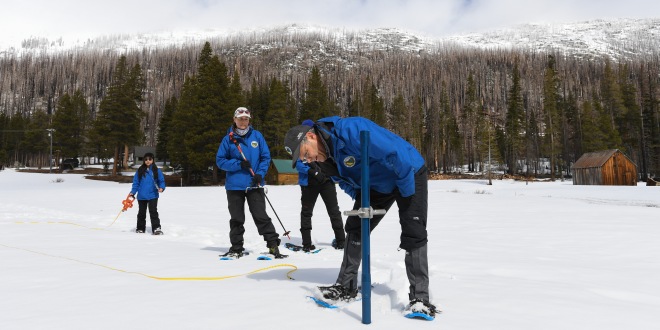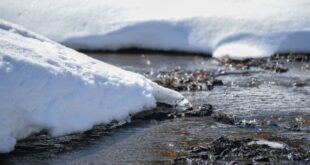The Department of Water Resources (DWR) conducted the April snow survey at Phillips Station last week. The manual survey recorded 39.5 inches of snow depth and a snow water equivalent of 17 inches, which is 70 percent of average for this location. Statewide, the snowpack is 90 percent of average for this date.
The April measurement is a critical marker for water managers across the state, as it is typically the time when the snowpack reaches its maximum volume and begins to melt. DWR’s water supply forecasts use data from the April 1 snowpack to calculate how much snowmelt runoff will eventually make its way into California’s rivers and reservoirs.
“It’s great news that our state’s snowpack has recovered from several weeks of extremely dry conditions in the heart of our winter storm season,” said DWR Director Karla Nemeth. “However, it’s not a wet year across the entire Sierra Nevada. The north has great snowpack, but snowpack is less than average in the central and southern part of the mountain range. That snowpack ultimately flows to the Delta, and the regional disparity affects how much water the State Water Project will be able to deliver.”
To prepare for the next drought, DWR and Governor Newsom have taken actions to secure and protect California’s water supply in the face of growing climate extremes while balancing the needs of the environment. In January, Governor Newsom issued an executive order to make it easier for local and regional agencies to maximize groundwater recharge, ensuring California is able to capture and store as much water as possible during high winter flows. Because of that, reservoirs across the state are currently 115 percent of average.
 California Water News Daily Your Source For Water News in California
California Water News Daily Your Source For Water News in California


